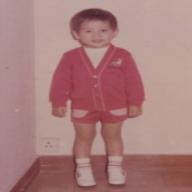例子:
I saw two man live in a cottage.個live要唔要轉lived?
I see two man live in a cottage.right? 如果錯了請解說
I saw three burglars break into the shop.right?如果錯了請解說
一個sentence唔可以有2個動詞咩?如果一個sentence有2個動詞是唔是第2個動詞寫返simple tense呀?
英文是唔是一個sentence得一個動詞呀?有唔明呀(15)
2011-03-06 1:19 am
回答 (4)
2011-03-06 7:42 am
✔ 最佳答案
I saw two man live in a cottage.I see two man live in a cottage.
I saw three burglars break into the shop.
All three sentences are correct. The first verb (see or saw) is used as the main verb, and the second verb (live or break) is not used as a verb, but as a bare infinitive (i.e. an infinitive without "to" in front of the "verb").
A bare infinitive works the same way as a regular infinitive, that it remains in its "base" form regardless of the tense of the main verb, and functions as an adjective, adverb, or noun. It usually follows certain main verbs:
1. 'Coercive' verbs: make, have, let.
2. Verbs of perception: see, hear, feel, watch.
3. Verbs that can take either: help, know.
Examples: (all are correct)
I saw the burgllar break in ......
I see the burglar break in ....
She makes him apologise.
She made him apologise.
He helps him clean up the room.
He helped him clean up the room.
He helps to clean up the room.
He helped to clean up the room.
Therefore, in your examples, each sentence only contains one verb, and that the second "verb" is not a verb, but looks like one in its simple present tense because it is a bare infinitive.
One respondent questions the use of "see" and "live" together, in the sense that you can see someone doing something, as an action, whereas "living" is for a period of time. However, within the context of your examples, "I see two man live in the cottage" does not really mean "seeing them live there", but "seeing the men there and concluding that they live there", so there is nothing wrong with the three sentences you provided, both in meaning, or grammatically.
2011-03-06 00:52:36 補充:
Correction re 003 ed_young
"two man" should have been "two men".
參考: My past learning
2011-03-06 11:46 pm
I agree with ed_young's explanation.
The main difference between using a bare infinitive versus a gerund after the verb "to see" is whether the event is one-time (bare infinitive) or continuous (gerund). The bare infinitive can also represent a state or a fact.
In addition, you can also use a normal verb because after to see, the relative pronoun "that" can be omitted.
I saw (that) three burglars broke into the shop.
If "three burglars" is replaced by a pronoun...
I saw them break into the shop. (breaking into the shop as an event)
I saw them breaking into the shop.
I saw (that) they broke into the shop.
X I saw (that) them broke into the shop. (This is grammatically incorrect since "them" cannot be the subject of the verb broke.)
The main difference between using a bare infinitive versus a gerund after the verb "to see" is whether the event is one-time (bare infinitive) or continuous (gerund). The bare infinitive can also represent a state or a fact.
In addition, you can also use a normal verb because after to see, the relative pronoun "that" can be omitted.
I saw (that) three burglars broke into the shop.
If "three burglars" is replaced by a pronoun...
I saw them break into the shop. (breaking into the shop as an event)
I saw them breaking into the shop.
I saw (that) they broke into the shop.
X I saw (that) them broke into the shop. (This is grammatically incorrect since "them" cannot be the subject of the verb broke.)
2011-03-06 6:04 pm
2011-03-06 2:54 am
I saw (past tense)
I saw two men live in a cottage. - problematic sentence *
I saw two men who lived in a cottage. correct
I saw two men living in a cottage. correct
I see (present tense)
I see two men live in a cottage. - problematic sentence *
I see two men who live in a cottage. correct
I see two men living in a cottage. correct
(1) I saw three burglars break into the shop.
(2) I saw three burglars breaking into the shop.
The difference between these 2 sentences is very subtle. Perhaps I can explain better by using another sentence:
(1) I saw my grandmother bake a cake
(2) I saw my grandmother baking a cake
Sentence (1) means that I saw the cake being baked from START to FINISH.
Sentence (2) implies that I only saw part of her baking, not from start to finish.
Now you see why the 2 earlier sentences are problematic.
Because if you say: " I saw two men live in a cottage " - This implies you see them living in the cottage from start to finish, which is impossible.
I saw two men live in a cottage. - problematic sentence *
I saw two men who lived in a cottage. correct
I saw two men living in a cottage. correct
I see (present tense)
I see two men live in a cottage. - problematic sentence *
I see two men who live in a cottage. correct
I see two men living in a cottage. correct
(1) I saw three burglars break into the shop.
(2) I saw three burglars breaking into the shop.
The difference between these 2 sentences is very subtle. Perhaps I can explain better by using another sentence:
(1) I saw my grandmother bake a cake
(2) I saw my grandmother baking a cake
Sentence (1) means that I saw the cake being baked from START to FINISH.
Sentence (2) implies that I only saw part of her baking, not from start to finish.
Now you see why the 2 earlier sentences are problematic.
Because if you say: " I saw two men live in a cottage " - This implies you see them living in the cottage from start to finish, which is impossible.
參考: 香港人 - 英國大學畢業
收錄日期: 2021-04-25 23:31:08
原文連結 [永久失效]:
https://hk.answers.yahoo.com/question/index?qid=20110305000051KK00874


